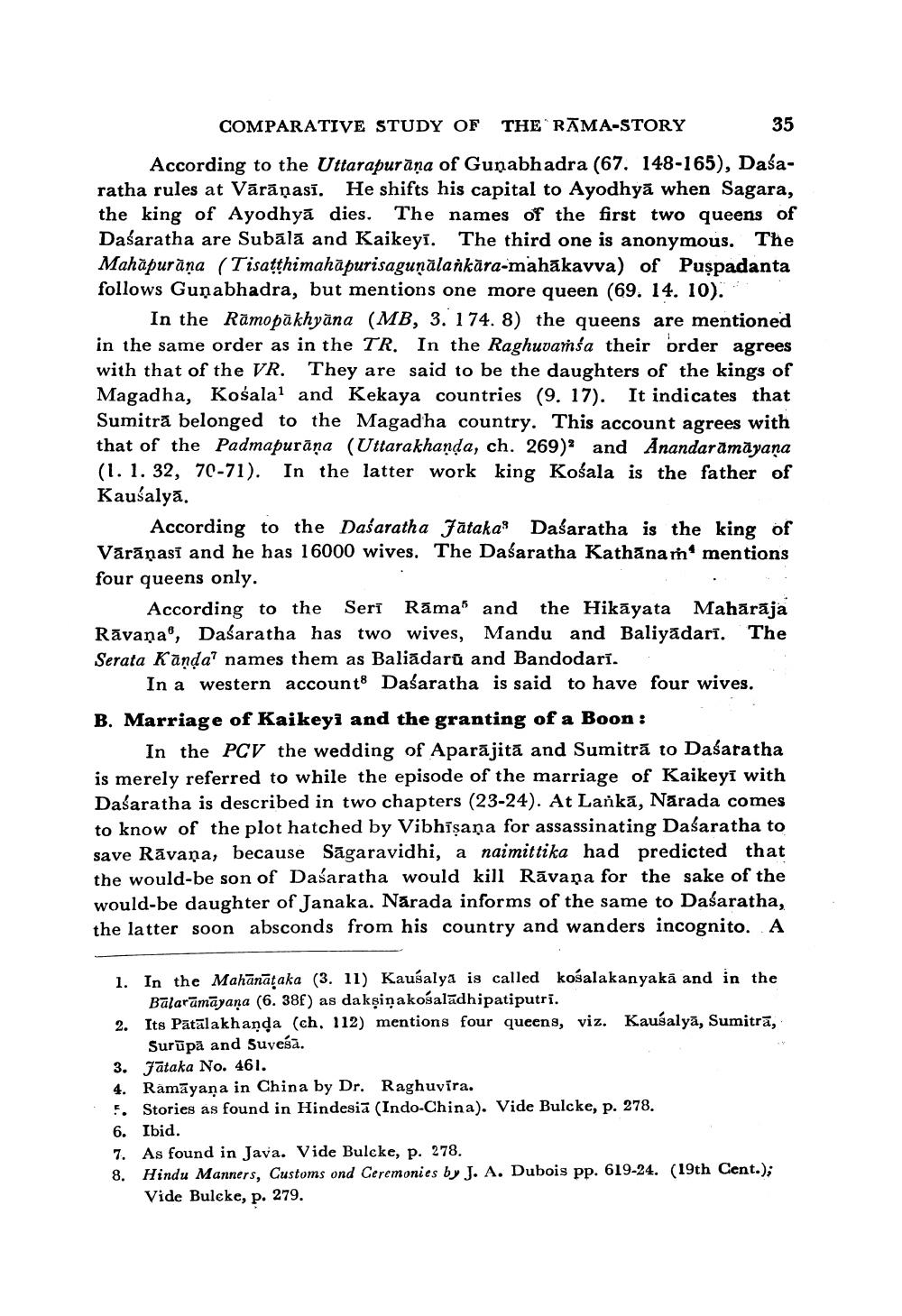________________
COMPARATIVE STUDY OF THE RAMA-STORY
According to the Uttarapuraṇa of Gunabhadra (67. 148-165), Daśaratha rules at Vārāņasī. He shifts his capital to Ayodhya when Sagara, the king of Ayodhya dies. The names of the first two queens of Dasaratha are Subālā and Kaikeyī. The third one is anonymous. The Mahapurana (Tisatthimahāpurisaguṇālañkāra-mahākavva) of Puspadanta follows Gunabhadra, but mentions one more queen (69. 14. 10).
35
In the Ramopakhyāna (MB, 3. 174. 8) the queens are mentioned in the same order as in the TR. In the Raghuvamsa their order agrees with that of the VR. They are said to be the daughters of the kings of Magadha, Kośala1 and Kekaya countries (9. 17). It indicates that Sumitra belonged to the Magadha country. This account agrees with that of the Padmapurāna (Uttarakhanda, ch. 269) and Anandarāmāyaṇa (1. 1. 32, 70-71). In the latter work king Kośala is the father of Kausalya.
According to the Dasaratha Jataka Dasaratha is the king of Vārāṇasī and he has 16000 wives. The Dasaratha Kathanam1 mentions four queens only.
According to the Seri Rāma" and the Hikayata Mahārāja Rāvana, Dasaratha has two wives, Mandu and Baliyādarī. The Serata Kanda' names them as Baliadaru and Bandodari.
In a western accounts Dasaratha is said to have four wives.
B. Marriage of Kaikeyi and the granting of a Boon:
In the PCV the wedding of Aparajita and Sumitra to Dasaratha is merely referred to while the episode of the marriage of Kaikeyī with Dasaratha is described in two chapters (23-24). At Lanka, Narada comes to know of the plot hatched by Vibhīṣaṇa for assassinating Daśaratha to save Rāvana, because Sagaravidhi, a naimittika had predicted that the would-be son of Dasaratha would kill Rāvaņa for the sake of the would-be daughter of Janaka. Narada informs of the same to Dasaratha, the latter soon absconds from his country and wanders incognito. A
1. In the Mahanataka (3. 11) Kausalya is called kośalakanyaka and in the Balaramayana (6. 38f) as dakṣinakośaladhipatiputri.
2.
Its Patalakhanda (ch. 112) mentions four queens, viz. Kausalya, Sumitra, Surupa and Suveśa.
3. Jataka No. 461.
4. Rāmāyaṇa in China by Dr. Raghuvira.
F Stories as found in Hindesia (Indo-China). Vide Bulcke, p. 278.
6. Ibid.
7. As found in Java. Vide Bulcke, p. 278.
8.
Hindu Manners, Customs ond Ceremonies by J. A. Dubois pp. 619-24. (19th Cent.); Vide Bulcke, p. 279.




